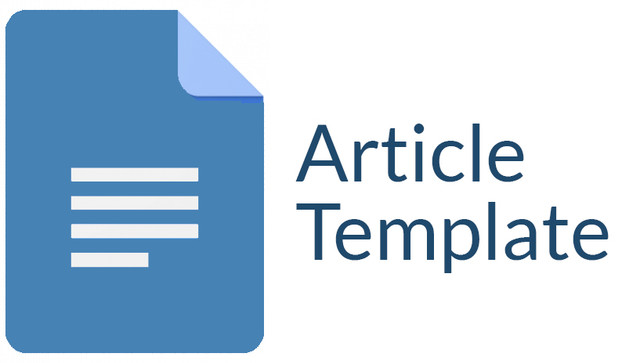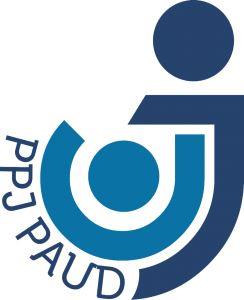Pengaruh Sentra Bahan Alam Terhadap Kemampuan Sains Anak Pada Kelompok B Ra Roudlotul Mujtahidin Jrambe Kecamatan Dlanggu Kabupaten Mojokerto
DOI:
https://doi.org/10.30736/jce.v1i2.17Abstract
This study aims to improve the ability of children science Group B RA Roudlotul Mujtahidin Jrambe Village District Dlanggu Mojokerto through Sentra Bahan Alam.Penelitian using quantitative research methods with the type of research is experimental research. This research uses Pre-Experimental Designs research design using One-Group Pre-Test-Post-Test Designs.
The value of improvement of the Science Ability of the 26 students who have done the application of learning Material Sentra Nature average score or value increased 13.50. Test Statistics above Asymp value. Sig (2-tailed) is 0, Because the value of Asymp. Sig (2-tailed) is smaller than 0.005 then there is a significant effect of the development of children's Science Skills before and after the application of learning Material Sentra Nature. Judging from the analysis of statistical figures generated through Wilcoxon Test, the result is that the Application of Learning Center of Natural Resources has an effect on increasing the ability of children Science in RA Roudlotul Mujtahidin Jrambe. Learning Center Natural Materials is very effective to improve the development of Science Capabilities of children especiallyReferences
Hanafi, M. Zakaria. 2014. Implementasi Metode Sentra dalam Pengembangan Kecerdasan Majemuk Anak Usia Dini. Yogyakarta: Deepublish
Hardjadinata, Yohana. 2009. Batitaku Mandiri.Jakarta: Dian Rakyat
Hirai Maya. 2010. Kreasi Origami Favorit. Jakarta:Kawan Pustaka
Julius Hambali, Siskandar, dan Mohamad Rohmad, 1996. Psych HYPERLINK "http://id-id.facebook.com/pages/Teens-n-Kids/199015246131"Teens 'n Kids, Google di unduh tgl 9 Juli 2011
Kurrien Zakiah, 2004. Memberdayakan Anak Belajar. Surabaya: Plan
Lara Fridani, M.Psych HYPERLINK "http://id-id.facebook.com/pages/Teens Kids/199015246131"Teens 'n Kids, Google di unduh tgl 9 Juli 2011
Martuti, 2005.Mengelola PAUD. Yugjakarta: Kreasi Wacana
Muhammad, As’adi. 2009. Panduan Praktis Menggambar Dan Mewarnai Untuk Anak. Jogjakarta:Power Books
Montolalu B.E.F. 2005.Bermain dan Permaianan Anak. Jakarta: UT
Nurani Sujiono, 2009. Konsep dasar Pendidikan Anak Usia Dini. Jakarta: PT Indek
Patmonodewo, 1994. Buku Ajar Pendidikan Prasekolah. Jakarta: Depdikbud
Subinarto, 2005. Jurus Jitu Mengasah Otak SI Kecil. Bandung: Media inc
Sudono Bambang, 1995. Metode Pengembangan Fisik. Jakarta: UT
Suharsimi, Arikunto, dkk., 2006. Penelitian Tindakan Kelas, Jakarta, Bumi Aksara.
Sugiyono. 2010. Metode Penelitian Pendidikan Pendekatan Kuantitatif, Kualitatif, dan R & D. Bandung: Alfabeta
Sukidin, dkk., 2007, Manajemen Penelitian Tindakan Kelas, Surabaya, Insan Cendekia.
Sudijono, BambangDkk. 2005 MetodePengembanganFisik. Jakarta: UT
___________________. 2007 Metode Pengembangan Fisik. Jakarta: UT
Suratno. 2005. Pengembangan Kreativitas Anak Usia Dini. Jakarta: Depdiknas
Yamin Martinis, Sanan jamilah Sabri, 2010. Panduan Pendidikan Anak Usia Dini, Jakarta: Gaung Persada
Downloads
Published
How to Cite
Issue
Section
License
Please find the rights and licenses in JCE (Journal of Childhood Education). By submitting the article/manuscript of the article, the author(s) agree with this policy. No specific document sign-off is required.
1. License
Use of articles will be governed by the Creative Commons Attribution - ShareAlike license as currently displayed on Creative Commons Attribution-ShareAlike 4.0 International License.
2. Author(s)' Warranties
The author warrants that the article is original, written by stated author(s), has not been published before, contains no unlawful statements, does not infringe the rights of others, is subject to copyright that is vested exclusively in the author and free of any third party rights, and that any necessary written permissions to quote from other sources have been obtained by the author(s).
3. User Rights
JCE (Journal of Childhood Education)'s spirit is to disseminate articles published are as free as possible but there is a little payment for publication. Under the Creative Commons license, JCE (Journal of Childhood Education) permits users to copy, distribute, display, and perform the work for commercial purposes. Users will also need to attribute authors and JCE (Journal of Childhood Education) on distributing works in the journal and other media of publications.
4. Co-Authorship
If the article was jointly prepared by more than one author, any authors submitting the manuscript warrants that he/she has been authorized by all co-authors to be agreed on this copyright and license notice (agreement) on their behalf, and agrees to inform his/her co-authors of the terms of this policy. JCE (Journal of Childhood Education) will not be held liable for anything that may arise due to the author(s) internal dispute. JCE (Journal of Childhood Education) will only communicate with the corresponding author.
5. Miscellaneous
JCE (Journal of Childhood Education) will publish the article (or have it published) in the journal if the article’s editorial process is successfully completed. JCE (Journal of Childhood Education)'s editors may modify the article to a style of punctuation, spelling, capitalization, referencing and usage that deems appropriate. The author acknowledges that the article may be published so that it will be publicly accessible and such access will be free of charge for the readers as mentioned in point 3.
JCE (Journal of Childhood Education) by Universitas Islam Lamongan is licensed under a Creative Commons Attribution-ShareAlike 4.0 International License.Based on a work at http://journalfai.unisla.ac.id/index.php/jce.












